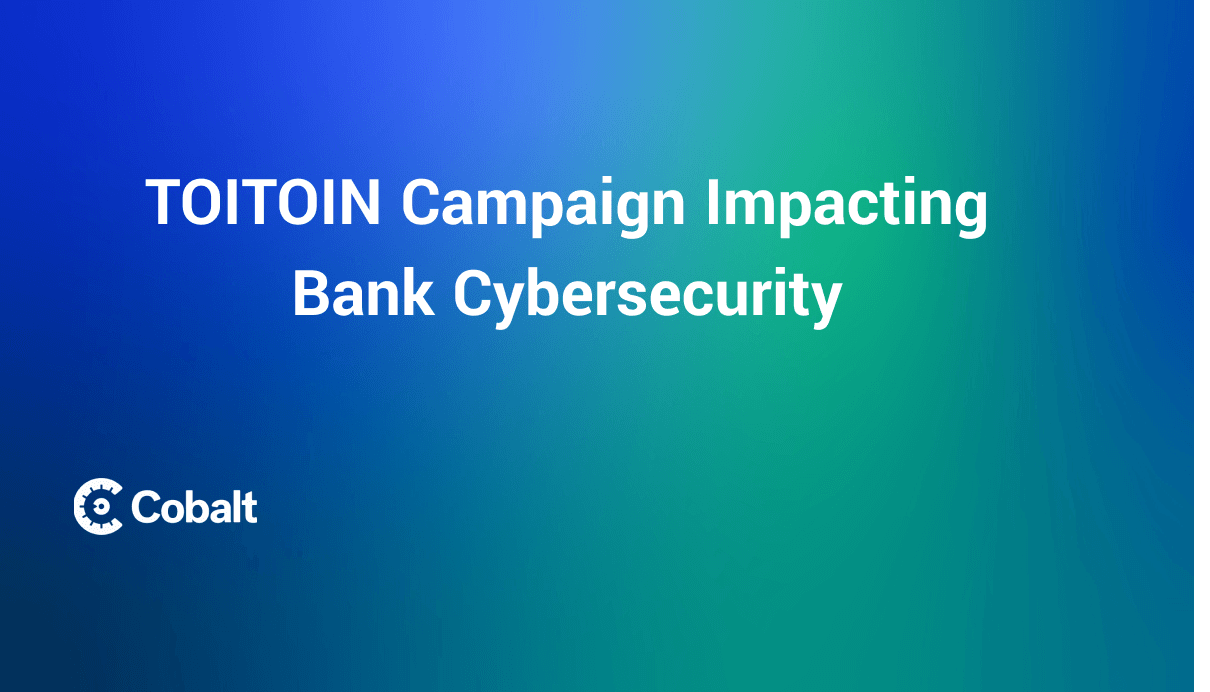As hackers become more sophisticated and technology rapidly advances, the threat of data breaches and malicious attacks are on the rise.
Cybersecurity professionals are continuously searching for new ways to stay ahead of these dangerous trends. In recent years, Artificial Intelligence (AI) has emerged as a powerful tool to help organizations protect their networks from cyberattacks.
Specifically, large language models (LLMs) hacking tools are becoming increasingly prevalent, allowing malicious actors to launch automated attacks with greater precision.
This article will explore the implications of AI hacking tools and provide best practices for staying ahead of the latest trends in cybersecurity. Finally, it will introduce Cobalt's PtaaS platform as a powerful tool to help organizations keep their networks safe from AI-driven threats.
AI Hacking: How It Works What It Means for Cybersecurity
AI hacking is a dangerous and growing threat to cybersecurity.
AI-enabled attackers have the potential to automate malicious activities such as data theft, fraud, and identity theft with greater speed and accuracy than human-only attackers. This has emphasized the need for organizations to update their security practices in order to stay ahead of threats.
Organizations must be aware of the dangers posed by AI hacking tools and take steps to ensure their networks are protected against them. Through the use of the right best practices, organizations can stay one step ahead of malicious actors using these emerging tools.
The Rise of Automation and AI in Cybersecurity
In a rapidly evolving digital landscape, where data breaches and cyber threats are becoming increasingly sophisticated, the integration of automation and AI has emerged as a game-changer in the world of cybersecurity.
As organizations face relentless challenges in safeguarding their assets and customer information, these cutting-edge technologies are proving to be indispensable allies.
Automation streamlines routine tasks, freeing up cybersecurity professionals to focus on more complex issues, while AI, armed with its ability to analyze vast amounts of data, supports security programs in many new and emerging ways. This powerful combination empowers businesses to proactively respond to potential risks, mitigating damages and strengthening their security posture.
As we witness the rise of AI in the cybersecurity realm, it is clear that embracing these advancements is not just a trend but a necessity for businesses to stay ahead in the ongoing battle against cyber threats.
New Black Hat AI Hacking Tools:
With the emergence of AI-powered hacking tools, malicious actors now have access to powerful tools that can automate their attacks. Among these emerging threats are AI-driven hacking tools that leverage large language models (LLMs) to generate and obfuscate malicious code, conduct advanced phishing campaigns, and create self-replicating malware. Understanding these tools and their potential impact is crucial for organizations aiming to safeguard their networks. In this article, we will discuss 8 of the most dangerous AI-powered hacking tools currently posing a threat to cybersecurity.
1. XXXGPT
XXXGPT uses a large language model (LLM) to generate malware from its training sets. As such, it can create convincing malware that is difficult to detect. The tool also has an obfuscation feature that helps disguise the code generated from the model, making it even harder for prevention and detection.
2. Wolf GPT
Wolf GPT is another dangerous AI-powered hacking tool that focuses on a different end goal, providing anonymity to the attacker within specific attack vectors. This type of AI system can generate realistic-looking malware by leveraging large datasets of existing malicious software. It also empowers attackers to send advanced phishing campaigns. As with XXXGPT, Wolf GPT also has an obfuscation feature which makes it difficult for cybersecurity teams to detect and block incoming threats.
Given the power of these tools, it is essential for organizations to prepare themselves against them in order to keep their networks secure. Cybersecurity teams must be aware of these tools in order to protect their networks from them.
3. ChatGPT
Chatbot tools like ChatGPT are becoming increasingly popular among malicious actors, as they present an opportunity to effectively launch automated cyber-attacks. ChatGPT was designed as an interactive customer service platform but has since been adapted by malicious actors to facilitate scams and phishing attacks. OpenAI, the company behind ChatGPT, has made numerous updates to address this and restrict the chatbot from providing malicious answers.
4. FraudGPT
FraudGPT is aimed at bypassing security controls using artificial intelligence to generate code that can evade traditional detection methods. This tool is particularly dangerous because it can create sophisticated scripts that are difficult for conventional security systems to identify and block.
5. FreedomGPT
FreedomGPT is a new AI tool that has been co-opted by malicious actors to generate harmful content. Originally designed for open-ended text generation, it has been adapted to create phishing emails, fake news, and other types of malicious content. Its ability to generate human-like text makes it a potent tool for social engineering attacks.
6. WormGPT
WormGPT is an AI tool specifically designed to create self-replicating malware. This tool can generate code that spreads across networks, infecting multiple systems. Its generative capabilities allow it to create new variants of malware, making it difficult for traditional antivirus solutions to keep up.
7. AutoGPT
AutoGPT is an AI tool that automates the process of generating malicious scripts. It can be used to create a wide range of harmful code, from ransomware to spyware. The tool's automation capabilities make it easy for even less technically skilled attackers to launch sophisticated attacks.
8. ChaosGPT
ChaosGPT is an AI tool designed to create chaos within targeted systems. It can generate scripts that disrupt normal operations, delete critical files, and cause other types of damage. Its ability to generate unpredictable and harmful code makes it a significant threat to organizational security.
Understanding these advanced AI-powered hacking tools is the first step; now let's explore the cybersecurity best practices that can help protect against these sophisticated threats. For more detailed guidance and professional support, visit our service offerings.
Cybersecurity Best Practices to Protect against Attackers
With malicious actors increasingly use AI-powered hacking tools, it's essential for organizations to implement the right security measures to protect themselves and stay steps ahead of criminals. Here are some best practices organizations can implement to get started with mitigating emerging threats:
1. Enable Multi-Factor Authentication
Adding an extra layer of authentication can help protect against unauthorized access. Multi-factor authentication requires users to provide two or more separate forms of identification, such as a password and a one-time code sent via text message or email before they can gain access. This makes it much harder for threat actors to gain access even if they manage to guess the password.
2. Use Strong Passwords
Weak passwords are easily guessed by malicious actors and make it easy for them to break into accounts and systems. To prevent this, organizations should use strong passwords that contain at least 8 characters made up of letters, numbers, and symbols and should never reuse passwords across multiple accounts or services.
It is also recommended that organizations use a password manager like LastPass or 1Password which can generate secure passwords automatically and store them securely in an encrypted database.
3. Keep Devices Up-To-Date
Organizations should ensure all their devices are running the latest version of their operating system with all security updates applied as soon as possible after release. This will help patch any vulnerabilities that attackers may exploit to gain access into networks or systems.
4. Monitor Network Traffic for Suspicious Activity
Organizations should monitor network traffic closely for any suspicious activity such as unusual logins, large file transfers, or unencrypted data transmissions which may indicate a breach has occurred or is in progress. Any suspicious activity should be investigated immediately by IT personnel and steps taken to address any potential issues quickly before further damage is done to the network or systems.
5 Mobile Device Security Best Practices
For added protection, organizations should also implement mobile device security best practices such as requiring longer passcodes on all devices, encrypting data stored on mobile devices, enabling remote wiping capabilities in case a device is lost or stolen, using virtual private networks (VPNs) when connected over public Wi-Fi networks and disabling auto-connect settings on Wi-Fi connections that could potentially connect users' devices with malicious hotspots set up by threat actors looking for victims
Organizations should take proactive steps in order to protect against malicious AI hacking tools like ChatGPT and FraudGPT – steps that start with implementing robust cybersecurity best practices outlined above but also include deploying powerful solutions like Cobalt's Penetration testing services to identify weaknesses in networks so they can be addressed before attacks occur.
The Cobalt PtaaS platform includes comprehensive reporting capabilities so organizations can track their progress over time and ensure their systems remain secure against ever evolving cyber threats.
Getting Started with Cobalt: Our PtaaS Platform for Pentesting
The rise of AI-powered hacking tools has made it increasingly difficult for organizations to protect against malicious actors. To stay ahead of the latest cybersecurity threats, organizations must take proactive measures and deploy powerful solutions. Cobalt’s PtaaS platform provides a comprehensive pentesting solution that leverages human-powered capabilities to detect anomalies and potential threats quickly.
To safeguard your organization and learn more about how to protect AI and LLM-enabled assets, download our solutions brief.
Cobalt’s PtaaS platform offers a comprehensive range of features designed to help organizations detect vulnerabilities in their system, analyze malicious activity, and respond to cyber threats swiftly. The platform uses pentesting methodologies to identify weaknesses in networks.
The Cobalt Platform provides organizations with a severity rating for their identified vulnerabilities to help support triage of vulnerabilities back to development teams. Additionally, the platform offers free retesting of vulnerabilities after remediation to ensure they are properly mitigated. The platform includes comprehensive pentest reporting capabilities so businesses can track their progress and ensure they remain better-protected against malicious actors.
By leveraging Cobalt's PtaaS platform for pentesting, organizations can stay ahead of the latest attacks and remain better protected against malicious actors using AI-powered tools. As an industry leader, Cobalt pairs a powerful platform with on-demand manual penetration testing services provide a valuable tool to help businesses keep their data secure at all times.









